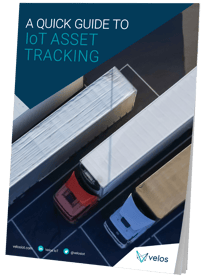
How is Cellular IoT Enhancing Asset Tracking Systems
Components of IoT asset tracking
While implementation details vary by industry and use case, all IoT asset tracking systems include these essential elements:
- Tracking devices. The size and shape of the tracker vary depending on the use case and the object that needs to be tracked. They may serve a single purpose, such as straightforward location tracking, or offer multifunctional capabilities like vehicle dash cameras with telematics data integration.
- Connectivity. The method by which tracking devices connect and transmit data back to systems is crucial. This is especially important for international asset tracking, where reliable network access is needed across deployment areas. Many commercial and industrial IoT applications leverage cellular networks for asset tracking due to their reliable connection and scalability.
- Management platform. Remote connectivity management becomes challenging with numerous assets. Consider tracking vehicle fleets distributed worldwide. Such scenarios require solutions for remotely provisioning and managing connections at the device level, functions typically handled through an IoT platform.
Benefits of Cellular IoT asset tracking
Cellular IoT asset-tracking solutions differ from other asset-tracking systems in several key ways.
- Real-time asset tracking.
Cellular connectivity enables real-time tracking and monitoring, providing instant access to location and status data. This immediacy is crucial for time-sensitive applications such as personal safety monitoring or theft recovery. - More automated processes.
Cellular IoT asset tracking systems automate much of the tracking process, streamlining operations and making asset management more cost-effective. By leveraging IoT technology, businesses can automate processes throughout the supply chain, reducing manual work and human error. - A recovery plan.
Cellular IoT asset-tracking solutions provide effective recovery strategies for lost or stolen assets. With continuous connectivity, businesses can quickly locate missing assets, improving overall security measures.
The integration of cellular IoT in asset tracking transforms the management of physical assets, bringing enhanced reliability and operational efficiency.
IoT asset tracking use cases
IoT asset management takes various forms, including:
Transportation IoT
Location-tracking devices are extensively used in transportation asset management. IoT enables intelligent tracking of fleets, vehicles and micro-mobility options like e-scooters and bikes across borders and through different coverage zones.
- Do you have robust connectivity for your fleet management?
- Read more about Transportation & Logistics IoT
IoT for Health & Safety
In healthcare and medical environments, IoT systems frequently track equipment and high-value assets. Sometimes the tracked "asset" is a person, especially when the system supports health or safety monitoring.
- Why is Cellular IoT-based pharmaceutical cold chain management important?
- Read more about Healthcare IoT
Manufacturing & Fixed Systems IoT
Manufacturing environments commonly use IoT asset tracking to monitor warehouse inventory and supply materials. It also monitors equipment and fixed systems, providing analytics and notifications regarding usage, downtime, maintenance needs and more through the IoT platform.
- Read more about IoT Manufacturer
Commercial Asset Tracking Services
Beyond industrial applications, IoT asset management offers promising consumer-facing solutions.
For example, Classic Tracker LTD provides a subscription service for classic car owners. The company uses Velos IoT's platform to deliver location-tracking services that protect and help recover vintage automobiles from theft. Similar approaches work for pet trackers, safety wearables and other peace-of-mind services.
The future of asset tracking
The asset tracking landscape continues evolving with technological advancements. According to research by IoT Analytics, the number of IoT-connected devices is expected to reach 27 billion by 2025, with asset tracking applications accounting for a significant portion of this growth.
Emerging technologies like artificial intelligence and machine learning are enhancing IoT asset tracking capabilities. These technologies enable predictive maintenance, advanced analytics and more sophisticated theft prevention measures. The integration of blockchain technology is also providing new ways to secure asset tracking data and ensure its integrity throughout the supply chain.
Battery efficiency continues to improve, with new low-power tracking devices offering years of operation without recharging. This development significantly reduces maintenance costs and expands deployment possibilities.
Is cellular asset tracking the right fit for your needs?
For global IoT deployments, selecting appropriate connectivity is crucial. Many use cases rely on IoT connectivity, but various options exist, including 4G, 5G and LPWAN. Choosing an option that aligns with data transmission requirements and budget constraints is essential. After determining the necessary cellular connectivity type, selecting an appropriate IoT SIM form factor for tracked devices becomes the next consideration.
The IoT connectivity management platform ties everything together seamlessly. This management software enables remote connectivity control, deployment-wide security implementation, monitoring of the entire SIM estate and creation of user-friendly customer portals.
If you're uncertain whether cellular IoT suits your asset-tracking project, contact our experts for guidance and request a free starter kit for hands-on testing.
Speak to a Velos IoT expert
Related articles


Real Time Managed IoT Connectivity Platform
Take full control of IoT devices with a managed IoT connectivity platform that empowers you with...

Do you have robust connectivity for your IoT fleet management?
Feeling overwhelmed with managing your fleet? This blog explains why using IoT for fleet management...
